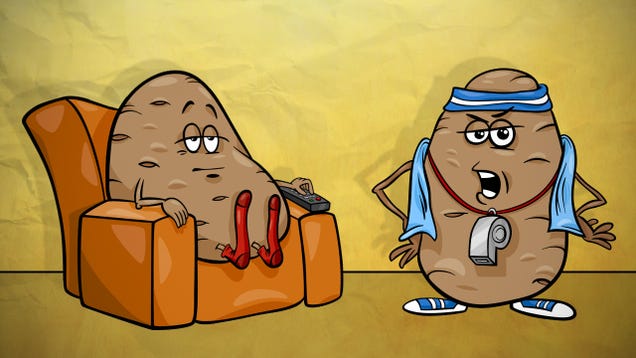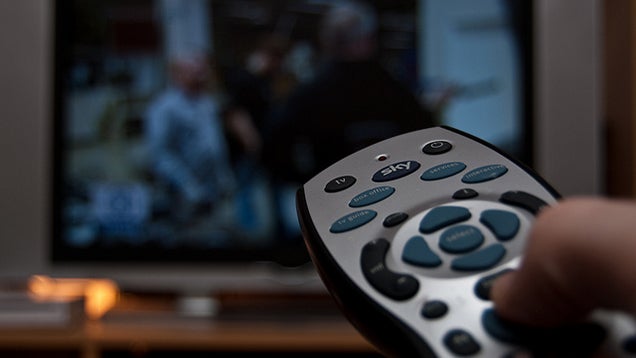![Who Is Lena Dunham’s Alleged Rapist?]()
Since its publication this fall, Lena Dunham’s bestselling essay collection,
Not That Kind of Girl, has inspired her fans and offered a different kind of inspiration to her foes. The right-wing press, in particular, has taken Dunham’s discursive set of autobiographical writings as a tip sheet to potential scandals and crimes involving the author—who is, as a paragon of metropolitan lefty pop culture, clearly a degenerate.
After a brief effort to paint Dunham’s account of her relationship with her younger sister as a confession of child molestation, her literary investigators have settled on what seems to be an even more fruitful line of inquiry: the essay in which Dunham describes being sexually assaulted as an undergraduate at Oberlin College.
Following the clues in the published text, Dunham’s antagonists have declared that the rape story is a hoax, one that falsely implicates a fellow student. The investigation has led Dunham’s publisher to announce a revision to future editions of the book—confirmation, to her foes, that she is lying, and that her alleged rapist doesn’t exist.
Most mainstream outlets have covered the details of the case with trepidation, if they cover them at all, allowing the central claims of the right-wing account to stand unchallenged. But the investigators aren’t just distasteful. They’re wrong.
Dunham didn’t invent a rapist character out of thin air, as the conservative writers have implied. The 2012 proposal for Not That Kind of Girl recounted the same night of unwanted unprotected sex—and supplied enough specific biographical detail to identify the man being described.
His name is Philip Samuel Ungar, a 2006 graduate of Oberlin. Now 30, he’s the son of former All Things Considered host and retired Goucher College president Sanford J. Ungar. Dunham has never explicitly named him, but his biography closely aligns with her characterization of her alleged rapist—“His father was actually the former host of NPR’s All Things Considered”—in an early draft of the chapter where she describes being assaulted.
The final manuscript of Not that Kind of Girl contains a significantly altered version of Dunham’s original account. It was this modified narrative, which used a new pseudonym for the alleged rapist (“Barry’), that jump-started a months-long effort to discredit Dunham’s claims.
Conservative media first latched onto Dunham’s memoir after National Review columnist Kevin D. Williamson noted that her description of “Barry”—labeled as a prominent campus Republican—pointed to an Oberlin graduate (and former campus Republican) with the same first name. Dunham eventually apologized to this Barry, calling the chosen pseudonym “an unfortunate and surreal coincidence.” Her publisher intends to alter the passage in future printings of Dunham’s book.
While Williamson’s long attack on Dunham was the first to draw specific attention to her story of sexual assault, what forced her apology was
a 3,850-word investigation by Breitbart’s John Nolte, who flew to Oberlin College in an attempt to verify the story. After canvassing the campus and digging into the library’s archives, Nolte concluded that “Barry” simply didn’t exist: “Lena Dunham might have been raped at Oberlin College, but the ‘Barry’ she describes in her memoir is a ghost.”
Taking their cue from Breitbart, an array of other conservative writers began to associate Dunham’s memoir with
Rolling Stone’s discredited U.V.A. report, and otherwise suggest the actress had lied about being raped. Here is columnist Ann Coulter:
All the hair-on-fire college rape stories have been scams: the Duke lacrosse team’s gang-rape of a stripper; Lena Dunham’s rape by Oberlin College’s “resident Republican,” Barry; and Rolling Stone’s fraternity gang-rape at UVA.
Media critic
Tim Graham:
As in the case of Bill Maher uncorking the vilest insults about conservatives (and their children), Dunham’s memoir proves again that being a left-wing hero on HBO means the liberal media never feel you have to tell the truth or act with any civility whatsoever.
Federalist senior writer Robert Tracinski:
Guess who else may have fabricated a story about campus rape? In her memoir, media darling Lena Dunham describes how, at Oberlin College, she and several other women were sexually assaulted by a prominent campus conservative named “Barry.” ... Now she may be revealed as someone who sought attention by defaming an innocent man and devaluing the stories of actual rape victims.
The New York Post even included Dunham’s account in a year-end round-up titled “2014 is the Year of the Liberal Lie.”
Each outlet apparently overlooked the curious “postscript” appended to Nolte’s original investigation, indicating that he had come across an entirely different lead about Dunham’s alleged rapist—but eventually dropped it because it was too much work:
Through various sources, Breitbart News learned that another news organization is pursuing other leads and individuals. One particular name came up twice. His name is not Barry, but for obvious reasons we won’t reveal his name. A thorough, good faith search did reveal that this individual attended Oberlin at the same time Dunham did. If this is him, two individuals directly involved in Oberlin’s Republican organization did not know the man Dunham describes as Oberlin’s “resident conservative.” We could find nothing about his political affiliation, and the only radio history we could find belonged to a family member. We were able to verify that this individual did not hold any kind of job at any Oberlin school library.
Where might this lead have come from? A few days later, in his
National Review column, Williamson supplied a clue:
Dunham’s account is rendered somewhat more suspicious in my mind by the fact that in her book proposal (which had been published by Gawker but was taken down after threats from Dunham’s lawyers), Dunham gives a slightly different account of the episode, and identifies the man as the son of a National Public Radio host. In my research, I have not been able to identify a contemporary Oberlin student who
exactly matches her description.
Some background: As many outlets have noted, Dunham provides ample detail for the character of “Barry” in the published version of
Not That Kind of Girl. He was Oberlin’s “resident conservative” and a “campus Republican”; wore a mustache and purple cowboy boots; worked at the college library; graduated in five years, rather than four; and so on. In
a recent essay for BuzzFeed, Dunham argued that these details were intended to conceal, not reveal, her alleged rapist’s identity: “Reporters have attempted to uncover the identity of my attacker despite my sincerest attempts to protect this information.”
This is a significant turn from the original book proposal for Not That Kind of Girl, which in late 2012 became so widely available in New York publishing circles that it was quoted by Slate, reviewed by the New York Observer, and eventually published by Gawker, and in which Dunham supplied very specific (and verifiable) details about her alleged rapist’s identity.
In Dunham’s 64-page proposal, her alleged assailant isn’t given a name; he’s referred to only as “our campus’ resident conservative.” He’s also noted for hosting a radio show called
The Spin Chamber, and for being the adopted son of “a former host of NPR's All Things Considered.”
I basically didn’t meet a Republican until I was nineteen, when I shared an ill-fated evening of love-making with our campus’ resident conservative, who wore snakeskin boots and hosted a radio show called The Spin Chamber. His father was actually the former host of NPR’s
All Things Considered, but he was adopted so didn’t inherit any of those skills. Mid-intercourse on the moldy dorm rug I looked up into my roommate Sarah’s potted plant and noticed something dangling. I tried to make out its nebulous shape and then I realized—it was the condom. All Things Considered had purposely flung the prophylactic into our tiny palm tree, thinking I was too dumb or too drunk or too eager to please to call him on it. [...] The next day, on the radiator in the art building, I told the story to my best friend Audrey who winced. Firstly because he was a Republican and secondly because, she whispered “you were raped.”
In
the finished book, The Spin Chamber is renamed Real Talk with Jimbo. The details of the host’s parentage are nowhere to be found.
There is no record of Oberlin College’s student-run radio station,
WOBC, airing a show called Real Talk with Jimbo. There is, however, a record of WOBC airing a show called The Spin Chamber during Dunham’s early undergraduate career. It was hosted by two Oberlin students: Jake Lemkowitz and a “Mr. Ungar.”
According to Oberlin’s
2005 student directory, the only Mr. Ungar on campus at the time was Philip Samuel Ungar. His father, Sanford, hosted All Things Considered from 1980 to 1982; he retired as president of Goucher College earlier this year. (Lemkowitz, so far as we can tell, does not have a father who hosted All Things Considered; we were not able to find another male host of the same show whose son ever attended Oberlin.)
Elsewhere in the same proposal, Dunham obliquely refers to the alleged rapist’s religious-ethnic identity:
Postscript: About six months after I had sex with that condom-throwing Republican I received a text message from an unknown number that said HAPPY JEW YEAR. Upon confirming his identity (it was indeed that same mustachioed Republican, all graduated now) I wrote back “Oh my gosh, so good to hear from you. I’ve actually been meaning to get in touch—I’m pregnant!” No response.
A quick Google search indicates that both of Ungar’s parents belong to a number of Jewish institutions,
including the Adas Israel synagogue in Washington D.C.;
Sanford Ungar was born to Eastern European Jews who immigrated to the United States. This doesn’t necessarily mean, of course, that their son identifies as Jewish. Whatever the case, the entire passage quoted above appears nowhere in the finished manuscript.
There are other, less conclusive coincidences. Like the character in Dunham’s finished book, Ungar graduated in December rather than the customary May, according to Oberlin’s registrar. (The earlier proposal does not say precisely when this character graduated.) And, on a Facebook account Ungar maintained up until very recently, he had photos of himself wearing what appeared to be a mustache.
Still, considering the amount of verifiable detail here—the name of the radio station, the character’s relationship to a former NPR host, the sideways reference to his ethnicity—there is little chance that any other Oberlin classmate of Dunham’s could fit the evidence so closely.
There is at least one discrepancy between the proposal and what we know about Ungar, however. According to public records, Ungar did not affiliate with either major political party until 2012, when he formally registered as a Democrat. Unlike the character in Dunham’s memoir, he does not appear to have ever been an on-the-book Republican—though it’s certainly possible he identified as one without ever filing the proper paperwork.
So what explains the significant evolution of the alleged rapist’s description between the proposal and the published text? Random House and Dunham, through her attorney, both declined to comment. It seems possible that the publisher asked her to remove the more identifying details to close off the possibility of a libel lawsuit—only to blunder into another potential suit thanks to the “surreal coincidence” of giving the rapist character the same name as a real Oberlin alumnus.
It’s possible, also, that Ungar is not the person who raped Dunham—that, for reasons unknown, she used certain details of Ungar’s life in her description of her sexual assault, and decided to remove them upon publication of the memoir.
Ungar did not acknowledge multiple and detailed requests for comment via email; his current whereabouts are unknown. His Facebook account, before he deleted it, listed his current city as Washington D.C., but his last known address there belongs to a house his parents sold in 2011, according to public records.
Sanford Ungar did not return phone calls or emails seeking his son’s contact info, either. In a conversation conducted over speakerphone, he told a lobby attendant at his condominium in Washington D.C. that he did not want to speak to me. “No, do not send him up, I do not want to see him,” Ungar told the attendant. Messages sent to other members of the Ungar family went unreturned as well.
Email: trotter@gawker.com · Photo credit: Getty Images
































